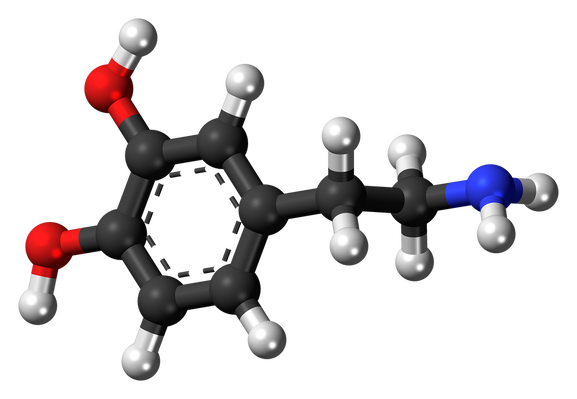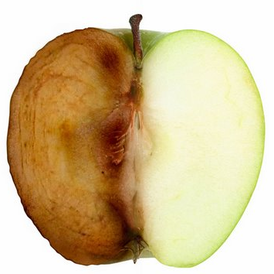Last week I fielded questions from a researcher at the Australian Catholic University about the Parkinson’s Disease (PD). At the end of the discourse I was asked, “how can I explain what you do so that PD patients would understand?”
It’s a good question …!
Traditional PD treatment follows a well worn pathway: GP’s; Neurologists; medications; and exercise, for example. Things progress: new surgical procedures, new medications, and new forms of exercise. The advancements can be necessary and worthwhile for most patients.
Many patients will comment that the nature of the work I do is a little different. Well, perhaps that is so, but only in the context that not many people are doing it and not in terms of anatomy, neurology, combinations of therapies and connecting some of the dots. Rather than thinking that some of the PD work I do is outside the box, I choose to nominate that I am widening the container.
Like many outward signs of most health issues, once the symptoms appear, you can almost bet that several (or even dozens) of other things have preceded it in order to manifest signs. For example, a tremor in PD.
I have said many, many times in practice that the human body is remarkable in it’s capacity to adapt. It’s part of our survival mechanism and we wouldn't have gotten this far without that ability. It is when we run out of adaptions that the dominant signs of a health problem occur. The body has nowhere to go.
This brings me to the first general concept when treating PD (or any other health issue for that matter). Often it is a matter of peeling back the layers (of compensation) until the body has a bit more room to move or breathing space.
This leads on to other concepts. The next obvious question to ask is “what are the layers that have to be removed?”
How many of you know that one of the first signs of PD is constipation? No one thinks about this much because we all get constipated every now and again or perhaps you’ve been constipated for your whole life and in some way you consider it normal?
There has been bucket loads of research (see the library on this website) about compensatory or genetic inflammatory gut issues that lead to a heightened immune response, first in digestive tract and then in the body as a whole. This allows for molecules to pass from the gut into the blood stream, which then cross the blood-brain barrier and affect neurological tissue.
The way the gut deals with this inflammatory/immune issue is through the lymphatic system. Here is one possible layer of compensation that I seek to affect. By the time PD is manifest, I often find the lymphatic system in the gut has become sluggish, overworked and is struggling. It’s a balance between not wanting the lymphatic system to overwork in the first place, but once it has to, allowing it to operate optimally.
Perhaps the gut also has other restrictions or adhesions related to surgery, genetic predisposition or dietary elements? It is possible to work manually with the mobility of the gut in order to improve its function.
Most people think of PD as a brain or neurological issue. There are certainly compensations that occur in the brain and involve the most direct link to the tremor that occurs via a lack of dopamine production in a structure called the substantia nigra in the midbrain. However, there are other structures in the brain, the ventral tegmental area (VTA) and the nucleus accumbens amongst them, that also produce dopamine. It is possible to work with these structures manually in order to optimise their function in the face of their inability to produce dopamine. I will often find secondary compensations in areas like the basal ganglia (movement initiation and repetition) and the cerebellum (balance, co-ordination, body awareness and feedback to and from the brain and body). The question becomes, can I optimise the function of these areas given that they may have compensated their activity, either prior to PD as a result of something else, or from the disease itself?
If you like, the second concept is one of removing any secondary but related compensations that accelerate the progression of PD.
Another tertiary concept is the improvement of the actual structure itself (substantia nigra, VTA etc) beyond its ability to produce dopamine, so that it functions as best it can.
So how is all this treated? Each structure or tissue (or even cell) has it’s own anatomical, physiological and energetic signature. These signatures can be identified via manual assessment if you know what you are looking for. If you know what the signatures normally feel like, you are also able to know what they feel like when they are ‘off’.
When structure or tissue is under duress, there is a resultant physical tension. The body has a natural tendency towards healing (you cut yourself, it heals). If the tension of the dysfunctional tissue can be changed, often the body part / cell / tissue will reorganise itself so that it functions better. It just needs the chance. See Brain work and Neuromeningeal Therapy elsewhere on this website for more information.
Is this type of treatment a panacea for PD? Certainly not. If you are not looking at your diet, bacterial population in the gut, stress levels, and heavy metal exposure amongst many other things, then it is likely PD will continue to manifest unabated.
However, it can be very effective as part of a larger program …
It’s a good question …!
Traditional PD treatment follows a well worn pathway: GP’s; Neurologists; medications; and exercise, for example. Things progress: new surgical procedures, new medications, and new forms of exercise. The advancements can be necessary and worthwhile for most patients.
Many patients will comment that the nature of the work I do is a little different. Well, perhaps that is so, but only in the context that not many people are doing it and not in terms of anatomy, neurology, combinations of therapies and connecting some of the dots. Rather than thinking that some of the PD work I do is outside the box, I choose to nominate that I am widening the container.
Like many outward signs of most health issues, once the symptoms appear, you can almost bet that several (or even dozens) of other things have preceded it in order to manifest signs. For example, a tremor in PD.
I have said many, many times in practice that the human body is remarkable in it’s capacity to adapt. It’s part of our survival mechanism and we wouldn't have gotten this far without that ability. It is when we run out of adaptions that the dominant signs of a health problem occur. The body has nowhere to go.
This brings me to the first general concept when treating PD (or any other health issue for that matter). Often it is a matter of peeling back the layers (of compensation) until the body has a bit more room to move or breathing space.
This leads on to other concepts. The next obvious question to ask is “what are the layers that have to be removed?”
How many of you know that one of the first signs of PD is constipation? No one thinks about this much because we all get constipated every now and again or perhaps you’ve been constipated for your whole life and in some way you consider it normal?
There has been bucket loads of research (see the library on this website) about compensatory or genetic inflammatory gut issues that lead to a heightened immune response, first in digestive tract and then in the body as a whole. This allows for molecules to pass from the gut into the blood stream, which then cross the blood-brain barrier and affect neurological tissue.
The way the gut deals with this inflammatory/immune issue is through the lymphatic system. Here is one possible layer of compensation that I seek to affect. By the time PD is manifest, I often find the lymphatic system in the gut has become sluggish, overworked and is struggling. It’s a balance between not wanting the lymphatic system to overwork in the first place, but once it has to, allowing it to operate optimally.
Perhaps the gut also has other restrictions or adhesions related to surgery, genetic predisposition or dietary elements? It is possible to work manually with the mobility of the gut in order to improve its function.
Most people think of PD as a brain or neurological issue. There are certainly compensations that occur in the brain and involve the most direct link to the tremor that occurs via a lack of dopamine production in a structure called the substantia nigra in the midbrain. However, there are other structures in the brain, the ventral tegmental area (VTA) and the nucleus accumbens amongst them, that also produce dopamine. It is possible to work with these structures manually in order to optimise their function in the face of their inability to produce dopamine. I will often find secondary compensations in areas like the basal ganglia (movement initiation and repetition) and the cerebellum (balance, co-ordination, body awareness and feedback to and from the brain and body). The question becomes, can I optimise the function of these areas given that they may have compensated their activity, either prior to PD as a result of something else, or from the disease itself?
If you like, the second concept is one of removing any secondary but related compensations that accelerate the progression of PD.
Another tertiary concept is the improvement of the actual structure itself (substantia nigra, VTA etc) beyond its ability to produce dopamine, so that it functions as best it can.
So how is all this treated? Each structure or tissue (or even cell) has it’s own anatomical, physiological and energetic signature. These signatures can be identified via manual assessment if you know what you are looking for. If you know what the signatures normally feel like, you are also able to know what they feel like when they are ‘off’.
When structure or tissue is under duress, there is a resultant physical tension. The body has a natural tendency towards healing (you cut yourself, it heals). If the tension of the dysfunctional tissue can be changed, often the body part / cell / tissue will reorganise itself so that it functions better. It just needs the chance. See Brain work and Neuromeningeal Therapy elsewhere on this website for more information.
Is this type of treatment a panacea for PD? Certainly not. If you are not looking at your diet, bacterial population in the gut, stress levels, and heavy metal exposure amongst many other things, then it is likely PD will continue to manifest unabated.
However, it can be very effective as part of a larger program …



 RSS Feed
RSS Feed